Every year there are a slew of surprising hit indie games that arrive on the scene to exceed all expectations. In 2022, that game was Cult of The Lamb, a roguelike cult simulator that saw adorable farm animals do very messed up ritualistic things to defy an Elder God. Then, in the previous year, It Takes Two took the spotlight as Game of The Year. Already in 2023, most people will say Sea of Stars seems poised to claim a breakout indie title this year, in what’s easily considered one of the greatest years of releases in gaming history. Yet, when it comes to truly underground indie titles, the kind of gems that are made out of a love of the craft by developers and creators who’re doing this out of a love of gaming, I’d actually say Slay The Princess stands out.
Had it been released in 2021, I think it could’ve even been a surprise GOTY contender, because the game is in every way a testimony to the possibilities of storytelling in video games and visual novels. By all means, this work is such a beautifully terrifying work of art with such a powerful purpose behind its meandering prose, which will take the player on an unexpected yet spooky journey.
Developed and distributed by Black Tabby Games for PC, Mac, and Steam Deck, Slay The Princess takes the basic premise of Princess Peach in video games and turns it on its head. Whereas in most cases the princess is the one meant to be saved, in this reality you’re the one meant to destroy her. Especially, because she’s allegedly destined to end the world. A masterclass in metanarrative and philosophy, this is a game about destinies and the countless consequences of choices – most of which end in murder between you and the princess.
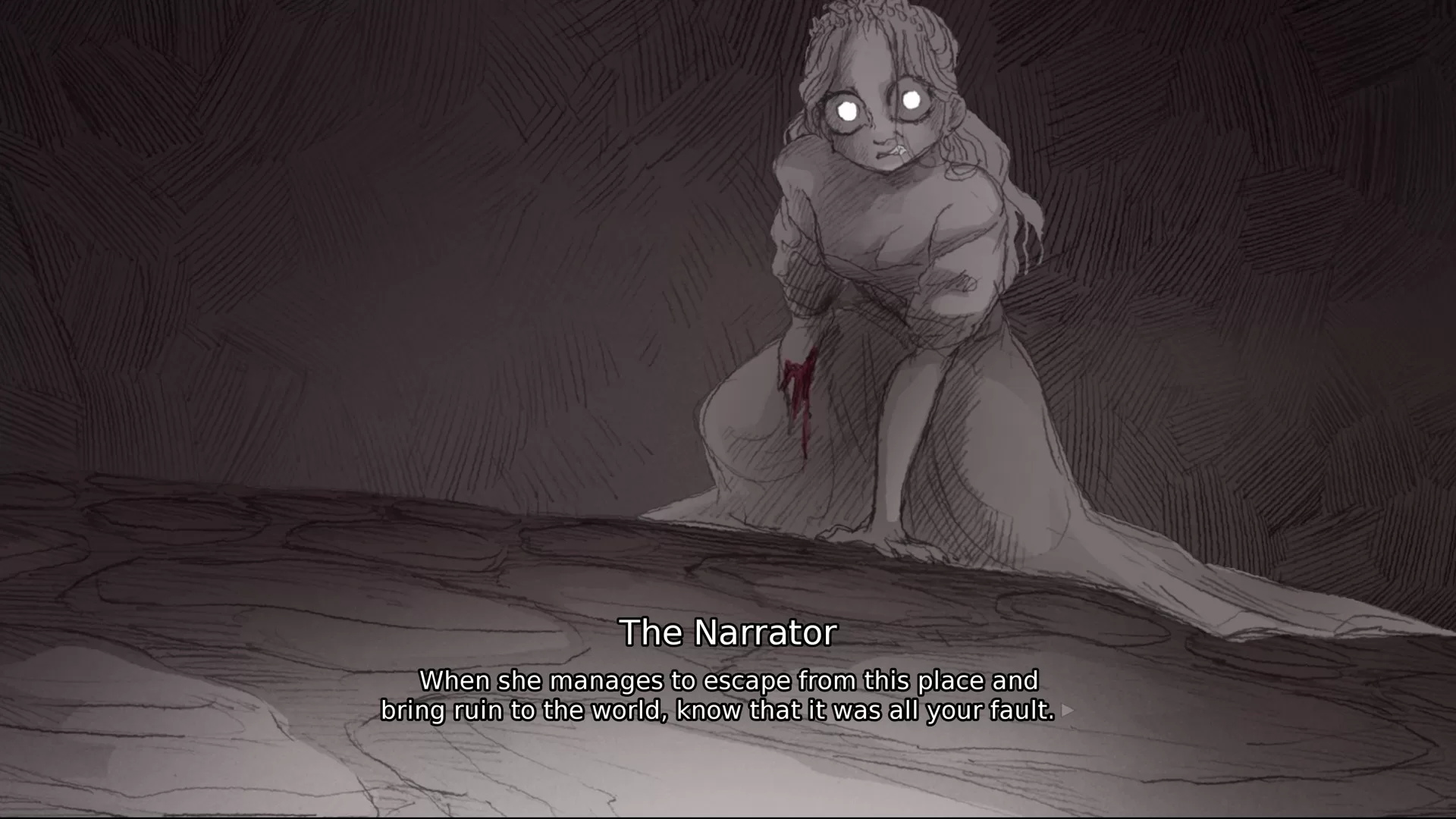
The story is a trippy journey with multiple endings and paths, where the narrative itself becomes a part of the monstrous experience. What’s compelling is that it becomes challenging to discern who’s at fault for our impending doom, or if anything you’re experiencing and learning about your role along with the princess is actually the truth. There are destinies to fulfill against a backdrop of conflicting personalities.
There’s the game’s English-sounding Narrator (voiced by Jonathan Sims of The Magnus Archives podcast), the less-than-human Princess that may be evil (voiced by Nichole Goodnight), and of course, there is you. Which should be straightforward yet is murky because the more you delve into the choices within the game, the more varied your voice becomes. Creating, in turn, different dialogues and various pathways to the story along with different endings.
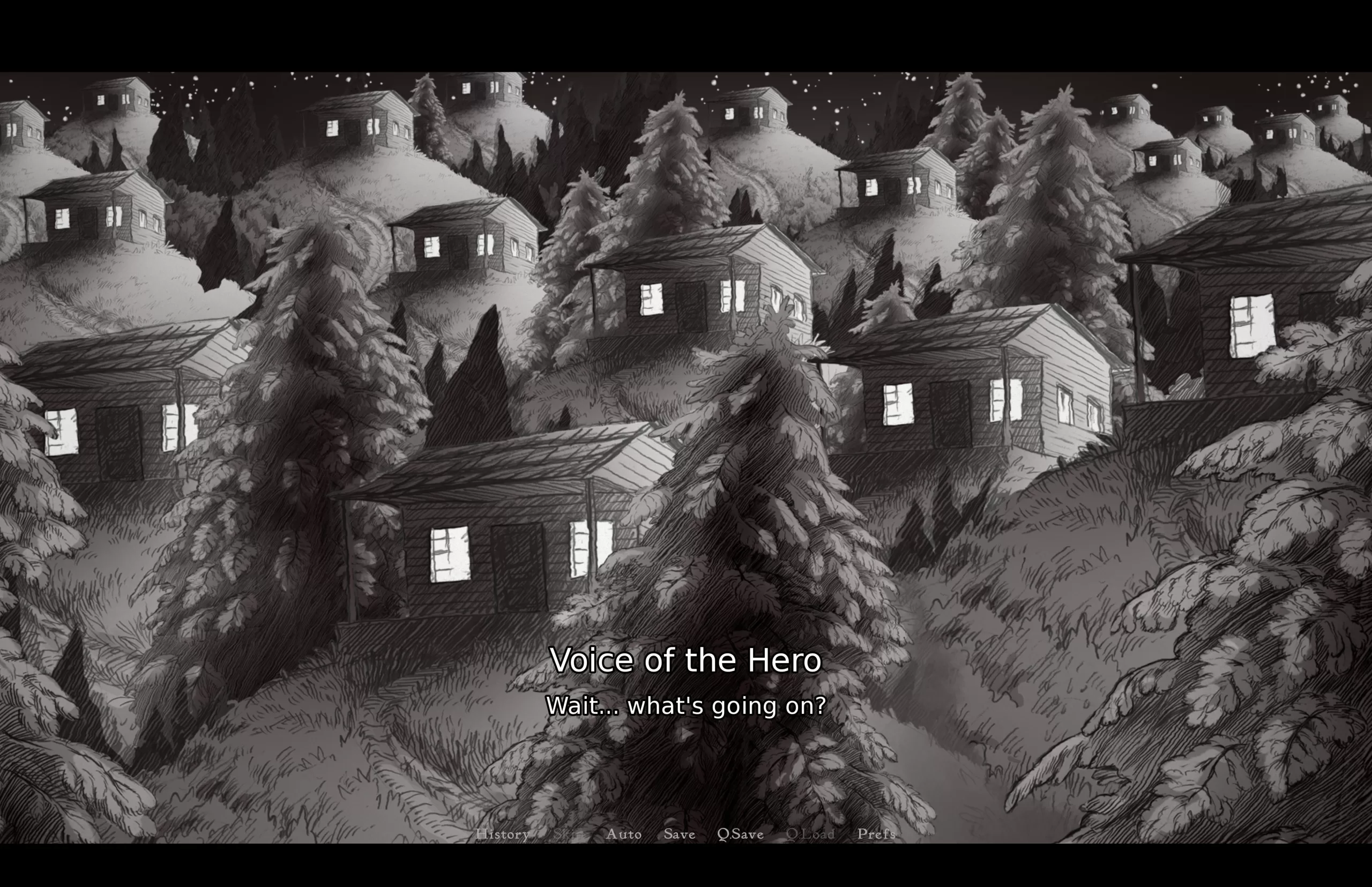
The game establishes archetypes for both yourself and the princess. With each encounter creating a sort of metanarrative defying unit – that without spoilers – ties every decision and non-decision made in the game into its endgame content.
“It’s up to you to decide the truth,” says Tony Howard-Arias, Lead Writer at Black Tabby Games. “There is no one way through this story, and how players arrive at situations alters the narrative trajectory as much as the scenarios themselves. We’re so curious to see how players react to the story’s context changing along the way and how that affects their decisions moving forward.”
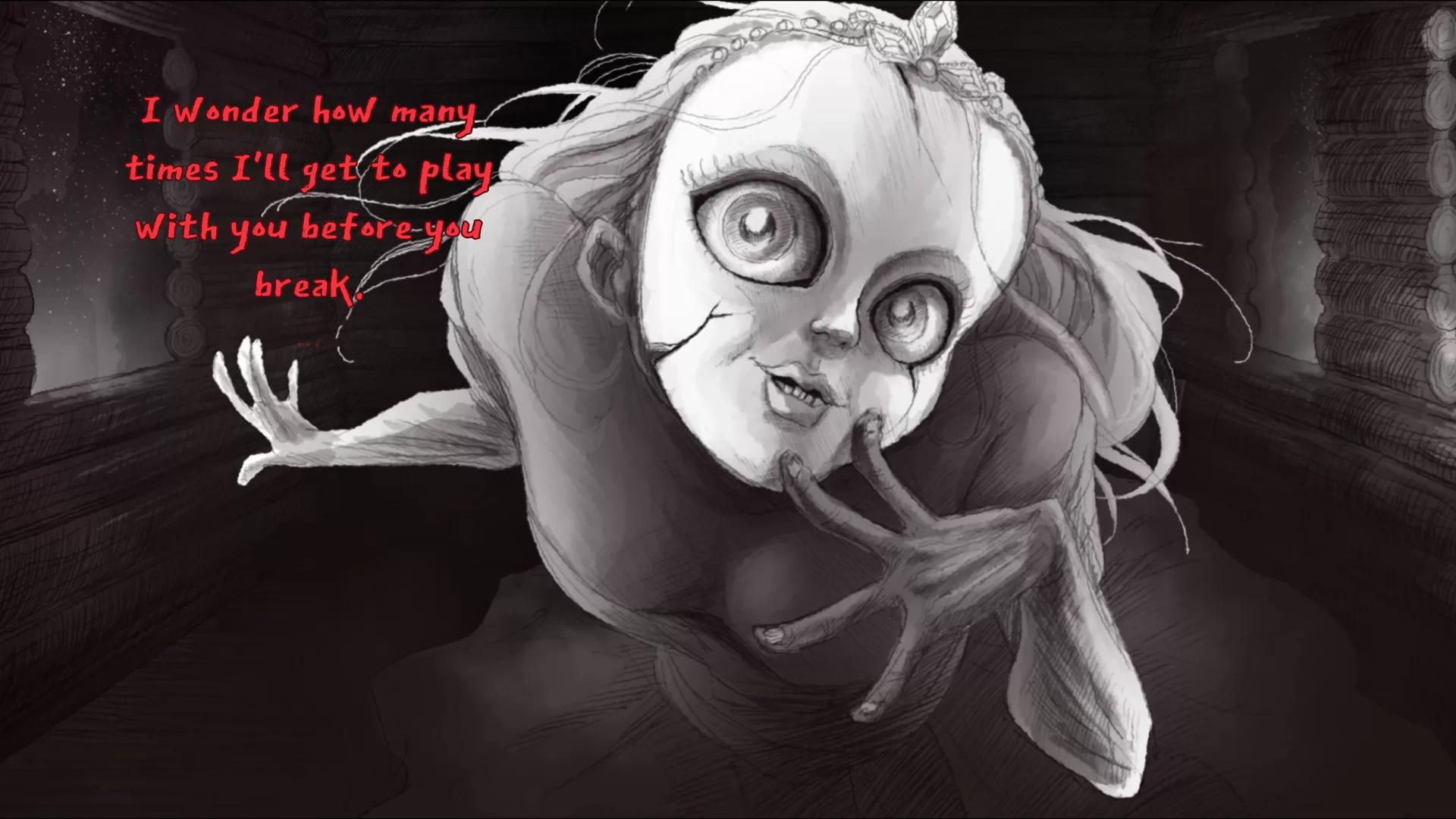
One of the most ingenious aspects of the gameplay is the featured time loop, where death in whatever fashion sort of resets the story from the beginning. A single session is broken into three repeating looped chapters, each influenced by your decisions previously, which more or less create divergent pathways and inner voices (because your actions have consequences both you and the princess remember).
I’ve genuinely never seen anything like this before in a video game, which is pretty rare to say the least. Add on top of this a brilliant use of multiverse theory in an age where it seems all of pop-cultural superhero entertainment seems obsessed with it, and what you play here is repeated experiences of horrific outcomes and repeated attempts to break the cycle. The player’s exploration of this world’s limits, both its physical boundaries but also it’s story cycle, sort of builds this otherworldliness to the tale.
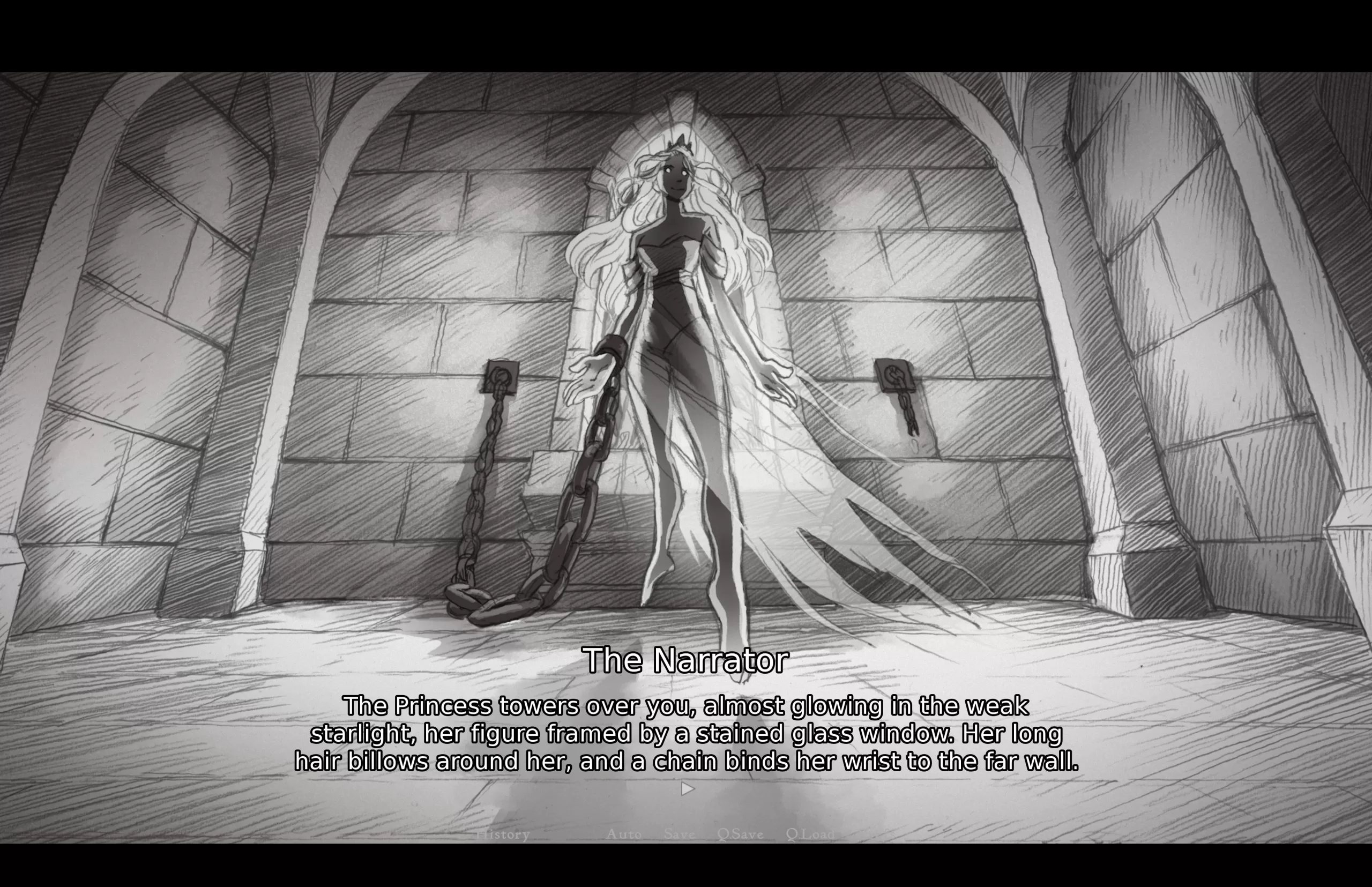
I can’t stress enough, that despite the many, “Will she kill you” or “Will you kill her” scenarios, this game isn’t entirely about that, so much as it is the great beyond of what comes after. It’s this characterization of your choices and the conscious voices you’re effectively creating, that delve into profound themes like finding peace, rebirth, death, and even infatuated love. It it thus this depth of scripting, beyond anything I’ve ever really seen, which is why this game is so horrifically well constructed. Building on the stakes of what happens next.
Taking a page out of choose your adventure novels, Slay The Princess is set in its design to clicking about and make dialogue choices that end up altering the world around you. Primarily focusing on the cabin, the woods, and the basement where you find the Princess, much of the shock comes in the creative ways these settings and situations evolve with every playthrough depending on how you left things with the princess and whether or not you choose to kill her, she killed you, or you both did something else entirely. It’s intriguing to say the least, seeing how your voice is distinct from the narrator’s.
Again, your actions create new voices and impact the different story outcomes, wherein as the game progresses, it becomes utterly unclear whether the Princess is good or bad, much like the narrator who at times controls your fate, and even, yourself. It is in these moments of characterization that the game features several wall-breaking scenes, as even exiting and reentering the game can become a part of the story, creating a very creepy fourth-wall experience. If you’ve ever played Doki Doki Literature Club, you’ll find similar vibes here.
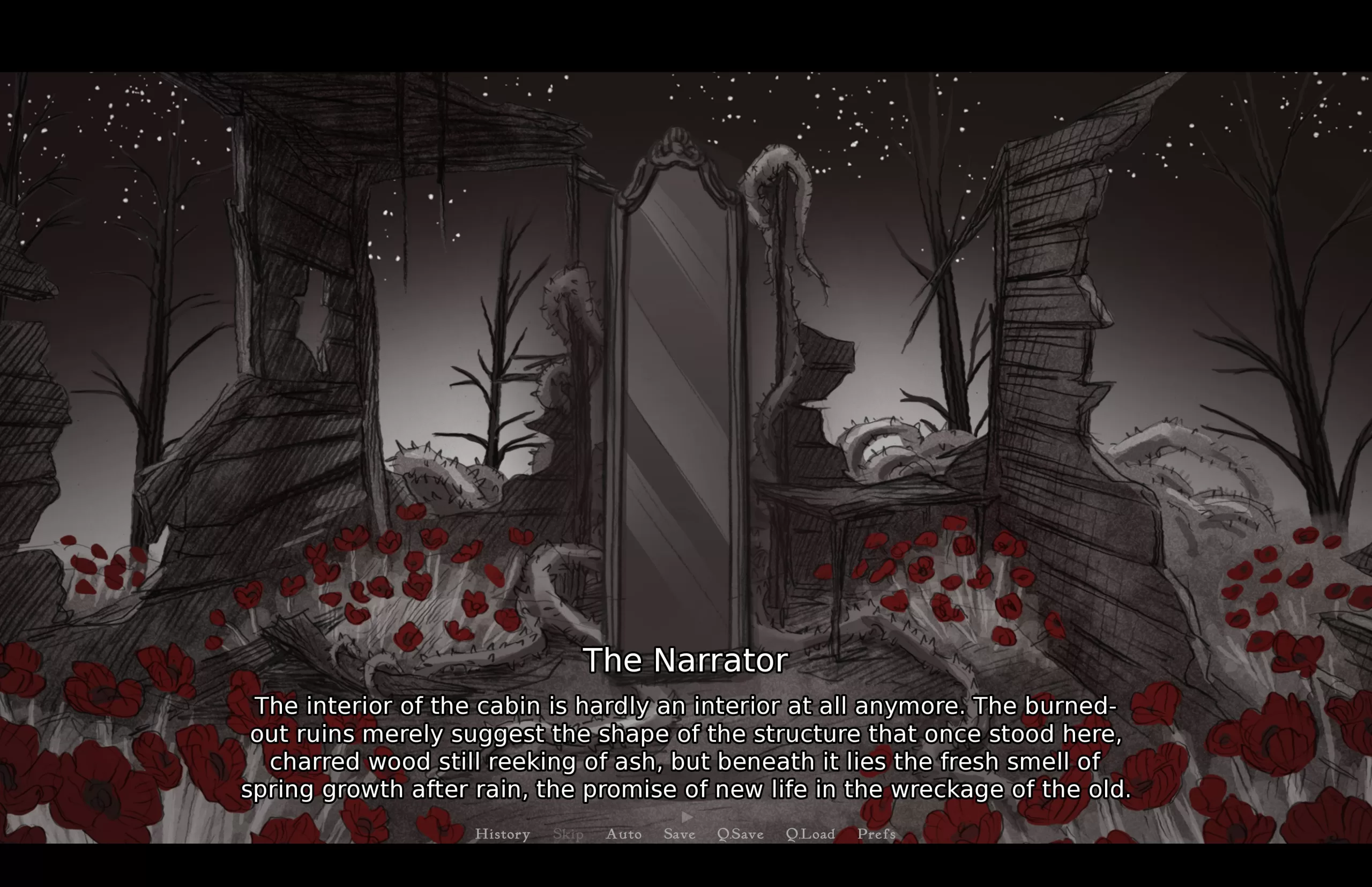
The artwork in Slay The Princess evokes such different types of horror including body horror, murder noir, otherworldly ghosts, and gruesome beheadings. Everything in this game is actually hand-drawn in monochromatic illustrations by Ignatz-winning graphic novelist Abby Howard (The Crossroads at Midnight, The Last Halloween). It’s simultaneously cringe-worthy and beautiful to say the least, with pencil-drawn black and white style, coupled with brief animations, which accentuates surprise and suspense.
Atop of this, your choices, whether aggressive or pacifist, often influence your relationship with the game itself as you learn more about it, and it learns more about you through your decisions – making the artwork change based on which chapter and path you’re currently on.
THE TAKE
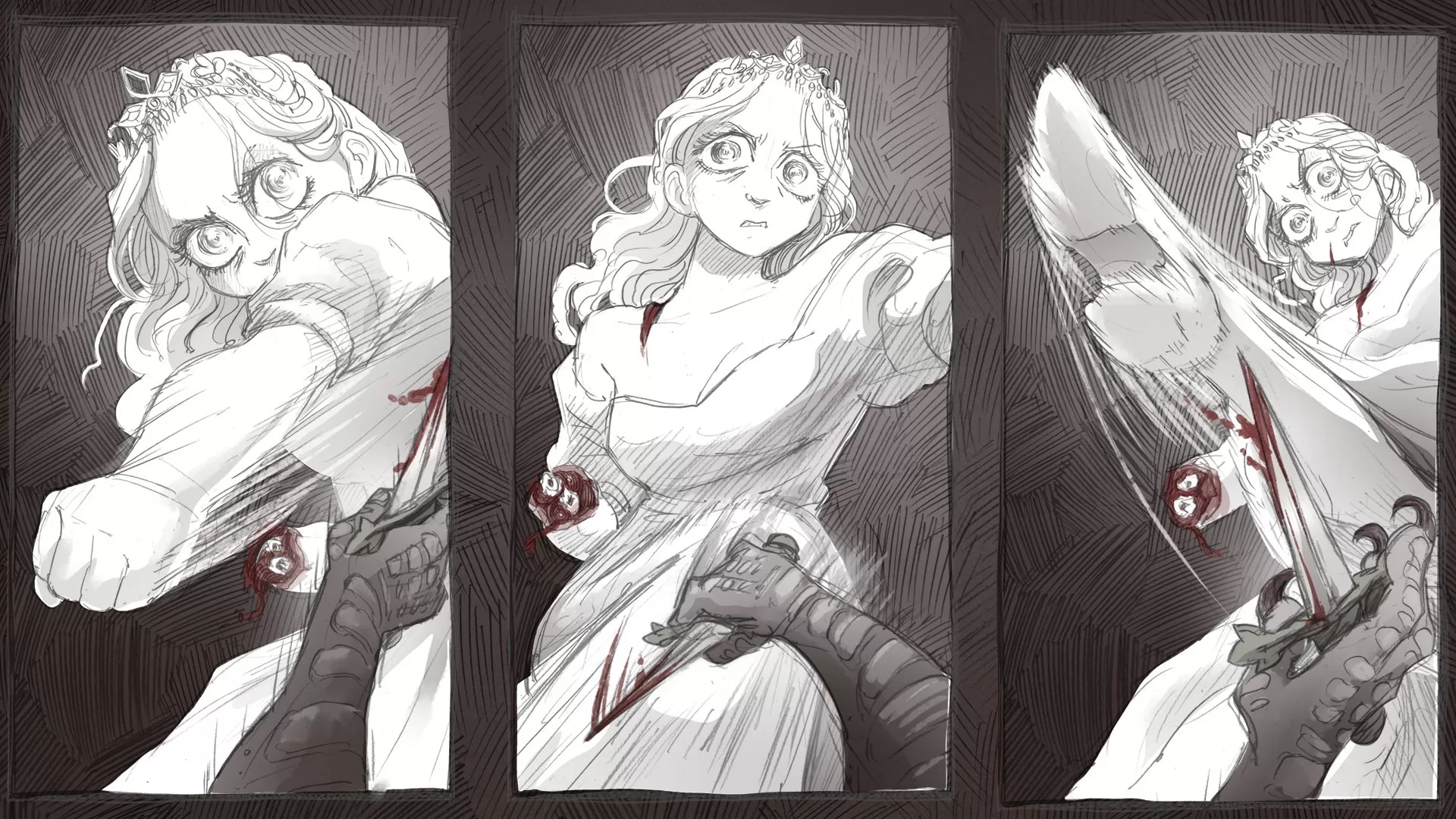
In summary, Slay The Princess offers a rare depth of storytelling for a visual novel centered around a seemingly simple concept. It defies expectations, compelling players to question their purpose in this world.
5 STARS
